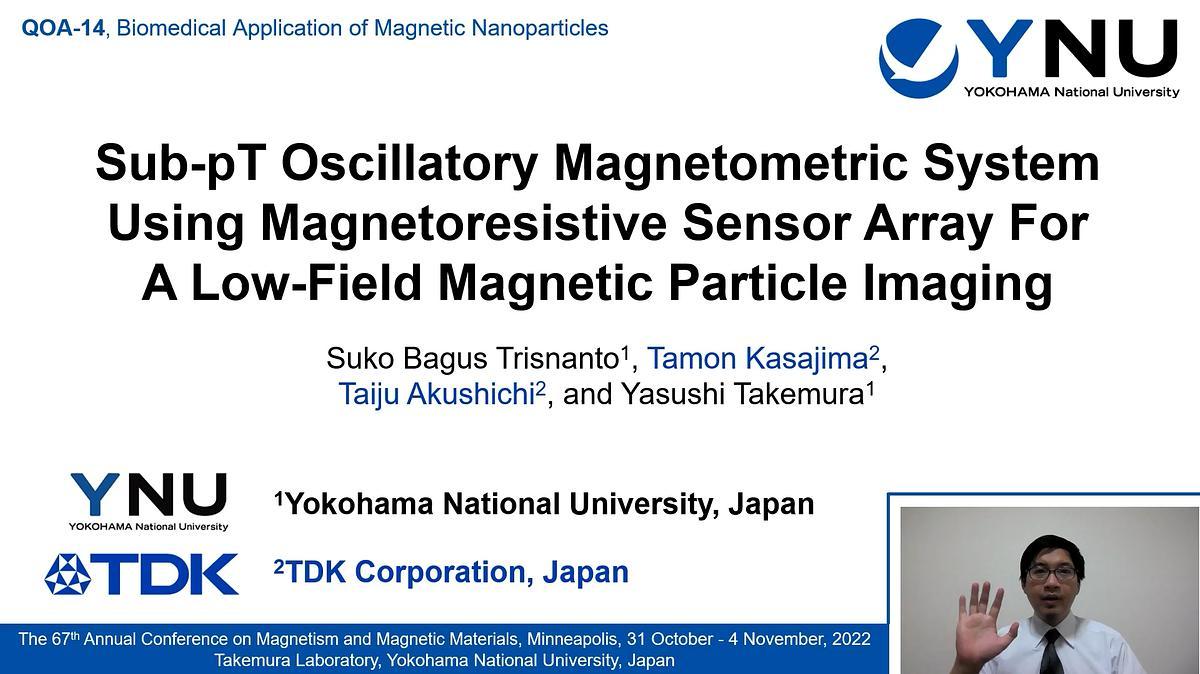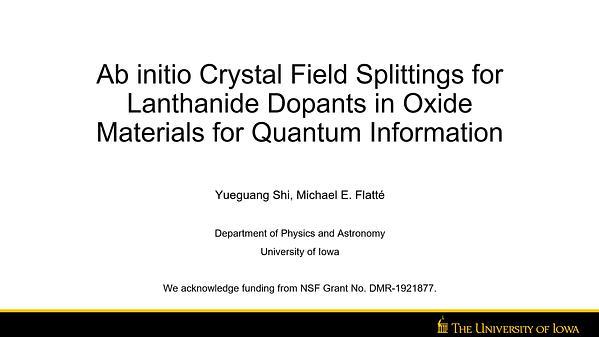
Premium content
Access to this content requires a subscription. You must be a premium user to view this content.

technical paper
Sub pT oscillatory magnetometric system using magnetoresistive sensor array for a low
Body Magnetic particle imaging (MPI) is a technique to visualize magnetic nanoparticles with high spatial and temporal resolutions based on nonlinear magnetization response.1
One of major challenges toward clinical MPI system is how to implement low ac excitation fields. For brain MPI particularly,2 a 24 kHz excitation field intensity with amplitude over 3.5
mT may induce peripheral nerve stimulation on human head.3 However, low-field MPI scenario degrades spatial resolution since the detected signal has no harmonic components but high
contamination from the excitation fields. Previously, we applied 1 MHz excitation field to elevate signal-to-noise ratio of receive coil.4 To further decontaminate magnetization signal
spectrally, we used magnetoresistive (MR) sensor to transform monotone signal into harmonic-rich one and reconstructed phantom image from odd harmonic components.5 Extensively,
MR sensor can be used to map quasistatic stray field of magnetic nanoparticles.6
Here, we will report the use of a 6×6 channels array of TDK Nivio xMR sensors to detect sub-pT magnetic signal and obtain its spatial distribution. While each sensor is operated at 5 V,
signal processing circuit rises its sensitivity to 20 mV/ pT at 10 kHz with 0.25 pT noise level. We used a 40-turns coil with 1 mm diameter and 5 mm length to represent magnetic moment.
The distance between MR sensor and the coil (dx) was 250 mm Fig. 1(a). From Fig. 1(b), MR sensor recognizes magnetic signal from mini coil fed with a 10 kHz ac current. Magnetic
field detected by the sensor (Hd) is linear with coil input current (i). Furthermore, we simultaneously recorded the signals from 36 sensor channels to map at 200 Hz. We set dx=50 mm to
obtain high contrast showing coil position relative to the array. From Fig. 2, the change in field polarity is observable from frames (i), (ii), (iii), and (iv) with channel c16 as reference. This
result highlights usability of MR sensor array for low-field MPI system.
References:
- B. Gleich and J. Weizenecker, Nature, 435, 1214 (2005).
- M. Graeser, F. Thieben and T. Knopp, Nat. Commun., 10, 1936 (2019).
- A. A. Ozaslan, M. Utkur and E. U. Saritas, Int. J. Mag. Part. Imag., 8, 2203028 (2022).
- S. B. Trisnanto and Y. Takemura, Phys. Rev. Appl., 14, 064065 (2020).
- S. B. Trisnanto, T. Kasajima and Y. Takemura, Appl. Phys. Express, 14, 095001 (2021).
- S. B. Trisnanto, T. Kasajima and Y. Takemura, J. Appl. Phys. 131, 224902 (2022).


